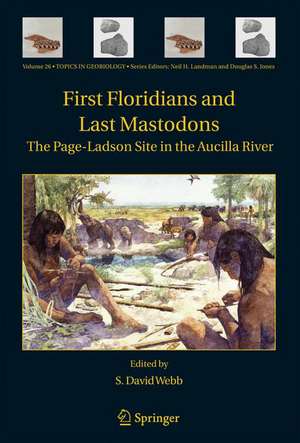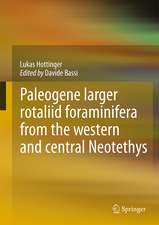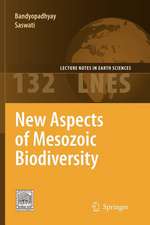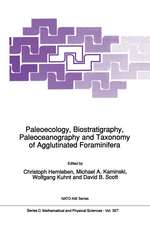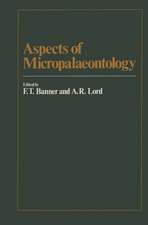First Floridians and Last Mastodons: The Page-Ladson Site in the Aucilla River: Topics in Geobiology, cartea 26
Editat de S. David Webben Limba Engleză Hardback – 18 oct 2006
| Toate formatele și edițiile | Preț | Express |
|---|---|---|
| Paperback (1) | 1830.80 lei 6-8 săpt. | |
| SPRINGER NETHERLANDS – 23 aug 2016 | 1830.80 lei 6-8 săpt. | |
| Hardback (1) | 1843.11 lei 6-8 săpt. | |
| SPRINGER NETHERLANDS – 18 oct 2006 | 1843.11 lei 6-8 săpt. |
Din seria Topics in Geobiology
- 18%
 Preț: 1858.10 lei
Preț: 1858.10 lei - 20%
 Preț: 822.08 lei
Preț: 822.08 lei - 15%
 Preț: 672.43 lei
Preț: 672.43 lei - 18%
 Preț: 1236.82 lei
Preț: 1236.82 lei - 15%
 Preț: 647.59 lei
Preț: 647.59 lei - 24%
 Preț: 885.02 lei
Preț: 885.02 lei - 18%
 Preț: 951.59 lei
Preț: 951.59 lei - 18%
 Preț: 964.23 lei
Preț: 964.23 lei - 18%
 Preț: 1117.69 lei
Preț: 1117.69 lei - 15%
 Preț: 633.31 lei
Preț: 633.31 lei - 18%
 Preț: 966.27 lei
Preț: 966.27 lei - 18%
 Preț: 952.54 lei
Preț: 952.54 lei - 18%
 Preț: 949.85 lei
Preț: 949.85 lei - 18%
 Preț: 1013.50 lei
Preț: 1013.50 lei - 24%
 Preț: 821.17 lei
Preț: 821.17 lei - 18%
 Preț: 952.40 lei
Preț: 952.40 lei - 18%
 Preț: 961.23 lei
Preț: 961.23 lei - 18%
 Preț: 952.26 lei
Preț: 952.26 lei - 18%
 Preț: 960.42 lei
Preț: 960.42 lei - 18%
 Preț: 954.31 lei
Preț: 954.31 lei - 18%
 Preț: 1256.41 lei
Preț: 1256.41 lei - 18%
 Preț: 959.50 lei
Preț: 959.50 lei - 15%
 Preț: 673.60 lei
Preț: 673.60 lei - 18%
 Preț: 954.14 lei
Preț: 954.14 lei - 15%
 Preț: 640.06 lei
Preț: 640.06 lei - 18%
 Preț: 959.36 lei
Preț: 959.36 lei
Preț: 1843.11 lei
Preț vechi: 2247.69 lei
-18% Nou
Puncte Express: 2765
Preț estimativ în valută:
352.67€ • 368.22$ • 291.89£
352.67€ • 368.22$ • 291.89£
Carte tipărită la comandă
Livrare economică 05-19 aprilie
Preluare comenzi: 021 569.72.76
Specificații
ISBN-13: 9781402043253
ISBN-10: 1402043252
Pagini: 616
Ilustrații: XXV, 588 p.
Dimensiuni: 155 x 235 x 43 mm
Greutate: 1.2 kg
Ediția:2006
Editura: SPRINGER NETHERLANDS
Colecția Springer
Seria Topics in Geobiology
Locul publicării:Dordrecht, Netherlands
ISBN-10: 1402043252
Pagini: 616
Ilustrații: XXV, 588 p.
Dimensiuni: 155 x 235 x 43 mm
Greutate: 1.2 kg
Ediția:2006
Editura: SPRINGER NETHERLANDS
Colecția Springer
Seria Topics in Geobiology
Locul publicării:Dordrecht, Netherlands
Public țintă
ResearchCuprins
Geology.- Underwater Excavation Methods.- Geography and Geomorphology of the Aucilla River Region.- Stratigraphy and Sedimentation.- Carbon Dates.- Pleistocene–Early Holocene Climate Change: Chronostratigraphy and Geoclimate of the Southeast US.- Paleobotany.- Setting the Stage: Fossil Pollen, Stomata, and Charcoal.- Paleoenvironmental Aspects of the Macrophytic Plant Assemblage from Page-Ladson.- Late pleistocene evidence.- Vertebrate Paleontology.- Non-marine Mollusca.- Mastodons (Mammut americanum) Diet Foraging Patterns Based on Analysis of Dung Deposits.- Mastodon Tusk Recovery.- Five Years in the Life of an Aucilla River Mastodon.- The Biogeochemistry of the Aucilla River Fauna.- Paleoindian Archaeology.- Early holocene evidence.- Terrestrial Soil or Submerged Sediment: The Early Archaic at Page-Ladson.- Early Holocene Vertebrate Paleontology.- Biogenic Silica as an Environmental Indicator.- Early Archaic Archaeology.- Hearths.- Conclusions.- Paleoindian Land Use.- Conclusions.
Recenzii
From the reviews:
"A monument of interdisciplinary scientific analysis and reporting, and absolutely essential reading for anyone interested in the early human settlement of the Americas." David G. Anderson, Dept. of Anthropology, The University of Tennessee, Knoxville, TN, USA.
"An excellent array of interdisciplinary studies conducted at an important site offering new and exciting clues on the origins of the First Americans" Dr. Stanford, Dept. of Archeology, Smithsonian Institution, Washington, DC, USA
"This impressive volume represents the culmination of over 20 years of underwater archaeological and paleontological research on one of the most significant Paleoindian sites in the southeastern United States. … The many important contributions in this volume have made tremendous progress toward that goal. … I highly recommend First Floridians and Last Mastodons to anyone interested in Paleoindian archaeology, late Pleistocene paleontology, or Quaternary paleoecology and climate change. It is certain to become an important reference work in those fields." (Gary S. Morgan, Journal of Mammalian Evolution, Vol. 15, 2008)
"This collective, edited work represents the culmination of 20 years of research, collection, and management of one of the most productive, underwater paleontological sites in the southeastern US … . The book is a fine addition to the library for those of us concerned with Pleistocene and Holocene aspects of the fossil record. … Certainly the book will appeal to academics, scientists and researchers in the fields of geology, paleontology, archaeology, biology, and ecology." (D. M. Jarzen, AASP Newsletter, Vol. 41 (3), 2008)
"A monument of interdisciplinary scientific analysis and reporting, and absolutely essential reading for anyone interested in the early human settlement of the Americas." David G. Anderson, Dept. of Anthropology, The University of Tennessee, Knoxville, TN, USA.
"An excellent array of interdisciplinary studies conducted at an important site offering new and exciting clues on the origins of the First Americans" Dr. Stanford, Dept. of Archeology, Smithsonian Institution, Washington, DC, USA
"This impressive volume represents the culmination of over 20 years of underwater archaeological and paleontological research on one of the most significant Paleoindian sites in the southeastern United States. … The many important contributions in this volume have made tremendous progress toward that goal. … I highly recommend First Floridians and Last Mastodons to anyone interested in Paleoindian archaeology, late Pleistocene paleontology, or Quaternary paleoecology and climate change. It is certain to become an important reference work in those fields." (Gary S. Morgan, Journal of Mammalian Evolution, Vol. 15, 2008)
"This collective, edited work represents the culmination of 20 years of research, collection, and management of one of the most productive, underwater paleontological sites in the southeastern US … . The book is a fine addition to the library for those of us concerned with Pleistocene and Holocene aspects of the fossil record. … Certainly the book will appeal to academics, scientists and researchers in the fields of geology, paleontology, archaeology, biology, and ecology." (D. M. Jarzen, AASP Newsletter, Vol. 41 (3), 2008)
Notă biografică
During four decades of service to the Florida Museum of Natural History, David Webb led paleontological excavations at two dozen major sites within the Late Cenozoic Era. Some of these, including the Aucilla River Prehistory Project, involved unique SCUBA excavations yielding extraordinary wet-site preservation. Professor Webb served as President of the Society of Vertebrate Paleontology, Guggenheim Fellow in western Europe, Visiting Professor of Geology at Yale University, and Distinguished Visiting Curator at the Field Museum in Chicago. He has conducted field work in Central and South America, Africa, China and Australia. He has edited or authored six books, and written some 200 scientific papers.
Outstanding specialists from other leading universities, U of Colorado, Columbia, Michigan, Minnesota, Pennsylvania, Santa Cruz, Stanford, and Texas have lent their expertise to this extraordinary project.
Outstanding specialists from other leading universities, U of Colorado, Columbia, Michigan, Minnesota, Pennsylvania, Santa Cruz, Stanford, and Texas have lent their expertise to this extraordinary project.
Caracteristici
The richest multidisciplinary work in eastern North America, combining Paleoindian archaeology, event stratigraphy, vertebrate paleontology, rich pollen records, and extraordinary macrobotanical data, both water-deposited and from the stomach contents of American Mastodon Data provide fundamental insights into two urgent issues: "the Peopling of the Americas" and "The Extinction of the Megafauna" Faunal and floristic data sets will be of great interest to all ecologists and environmentalists Excellent color photo section expresses the unique setting and adventure of this project, extensively supported by National Geographic Society
